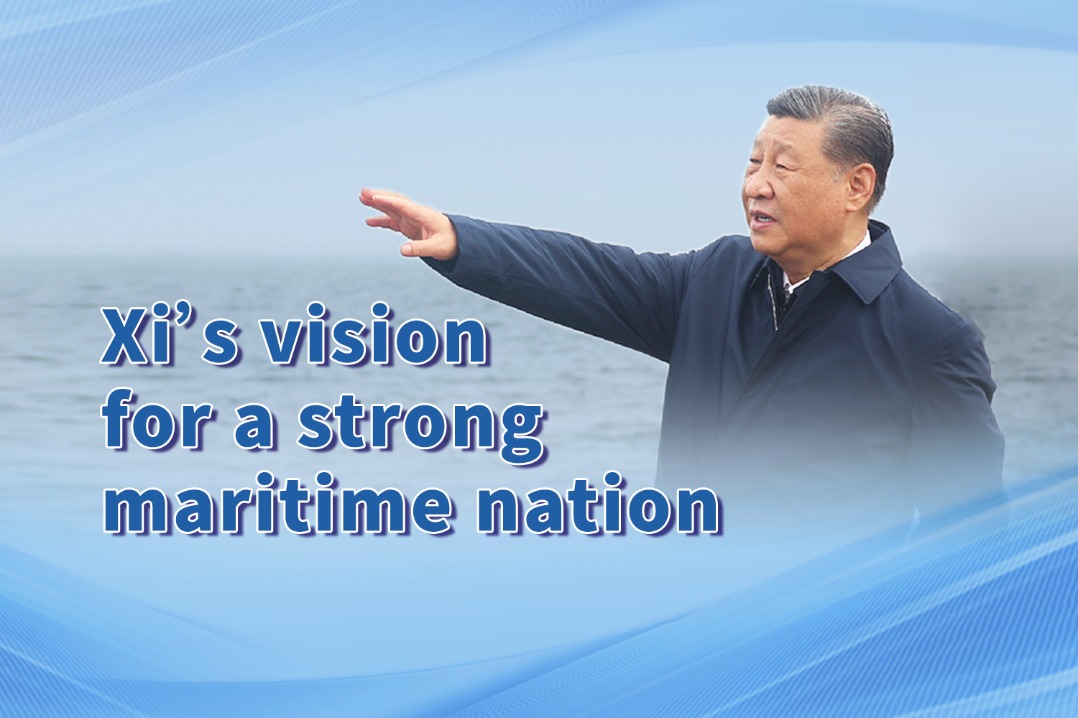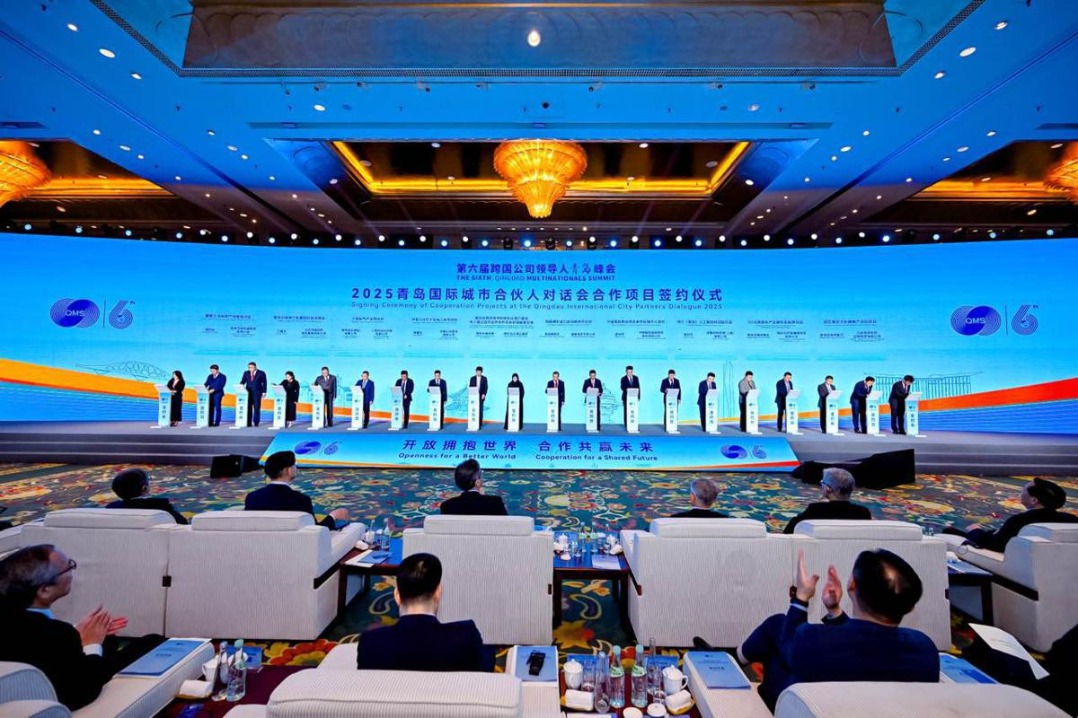Reflections on China's reforms


Forty years ago in December, Deng Xiaoping delivered his historic speech: "Emancipate the mind, seek truth from facts and unite as one to face the future." This triggered four decades of reform and opening-up that have transformed China into the world's second-largest economy. By some time in the next decade, China will be among the few countries in the world that will have transitioned from low-income to high-income status since World War II.
Understanding the path China has traveled, the circumstances under which historical decisions were made, and their effects on the course of China's economy will inform future decision makers. Increasingly, this reflection is important to the rest of the world as more and more countries see China as an example to emulate. At the 19th National Congress of the Communist Party of China in October 2017, China accepted this mantle for the first time since the onset of reform and opening-up.
In some ways, China's reforms were fairly mainstream. The country opened up for trade and foreign investment, liberalized prices, diversified ownership, strengthened property rights, kept inflation under control, and maintained high savings and investment.
But this view is simplifying the reform and opening-up and obfuscates their essence: the unique steps China has taken to reform its system are what make its experience of interest. Its gradual approach to reform was in sharp contrast to Eastern Europe and the Soviet Union. Although often compared, China and other transition countries were simply too different in terms of initial economic conditions, political development, and external environment.
Predominantly rural and among the poorest countries on Earth, China was marred by the disruptions of the "great leap forward" and the "cultural revolution (1966-76)". Integration into the global economy was minimal. Industry was inefficient, but also far less concentrated than in Eastern Europe and the Soviet Union. Perhaps most importantly, because China retained political continuity, it could focus on an economic and social transition instead of a political one.
Comparison with much of the Latin American reforms also seems out of place. Brazil, Mexico and Argentina were far closer to a market-based system than China, and their reforms-liberalization and macroeconomic stability-were focused on macroeconomic stabilization, whereas China's reforms aimed for a transformation of the economic system as a whole. So there is no need to juxtapose the "Washington Consensus" with a "Beijing Consensus": the approaches taken served very different purposes indeed.
How did China reform?
Reform in China developed gradually, starting in the rural areas with the household responsibility system and township and village enterprises. Though special economic zones were established early on, and were to some extent a laboratory for market reforms, steps to open up the economy to foreign trade and investment only started to play a big role in the 1990s. China's financial sector and State-owned enterprises' reform was also gradual, gaining momentum only in the mid-1990s. The country's motto was "crossing the river by feeling the stones", denoting partial reforms in an experimental manner, often starting in a few regions, and expanding them upon proven success. A broader strategy emerged only in 1993, with the Decisions of the Third Plenum of the 14th CPC Central Committee, but this too was implemented gradually.
In addition to being a means to find solutions suitable to China, experimentation and gradualism was a means to circumvent political resistance against reform. Many in the CPC retained a suspicion of the market. Gradual experimental reform was also a pragmatic approach in a heavily distorted environment in which "first best" solutions were unlikely to apply. Experimental reforms, confined to specific regions or sectors, allowed the authorities to gather information on the unanticipated effects of reform. They were also able to develop and test the administrative procedures and complementary policies needed to implement the reform. Success meant the experiment could be expanded to other regions and sectors.
Finally, experimental reform also saved reformers from "losing face". An experiment that did not work could be abandoned rather than condemned as a policy failure. The strategy reinforced the credibility of reform over time. By making reform one step at a time, and starting with those most likely to deliver results, the Chinese government built up its reputation for delivery. Every successful reform helped the next one. This also built up experience and skills for the design and implementation of reform, helping China to build up its "reform" capital.
Decentralization of authority became a powerful tool. The provinces and local governments received increasing authority over investment approvals, fiscal resources, and policies. Provinces, municipalities and even counties were allowed, even encouraged, to experiment with reforms. Successful experiments became official policy and were quickly adopted throughout the country. By decentralizing, China turned the country into a laboratory for reform.
The fiscal system and the political organization within the Party were key in aligning sub-national government incentives with that of the center. The fiscal reforms introduced in 1980 formed a de facto tax contracting system, with high revenue retention rates for local governments, particularly set for growth. For instance, Guangdong province paid a lump sum in revenues to the central government, and retained 100 percent of the rest. The benefits of reforms were distributed broadly across the population and governments, creating strong incentives to pursue growth and promote a market economy.
Within the Party, achieving growth-by creating jobs and attracting investment-quickened promotions. Social achievements also played a role, but success with GDP growth, especially in the regions, was paramount to climbing up to higher posts. This regional experience enabled the most talented to demonstrate their capacity to reform.
A disadvantage of the approach was imperfect macroeconomic control and repeated bouts of inflation driven by local governments' loosening their investment and credit controls. These conditions gave rise to local protectionism, which threatened to undermine China's unified market. In 1992, reform regained momentum after Deng Xiaoping's "Tour through the South", but inflation re-emerged, and the agenda became one of centralization of policies. Fiscal and financial reforms followed, aimed at creating the tools for macroeconomic management in a market economy.
In the course of reform, China's own particular transitional institutions emerged. The "dual track" system for growing out of the planned economy was the most important of all transitional institutions. It allowed a continuation of the planning system at planned prices, which avoided the collapse of production. But on the margin, the system allowed a nonplanned economy to emerge. This also provided the information needed to gradually reform within-plan prices in such a way that by the time of the abolition of most material planning in the mid-1990s, plan and outside-plan prices had been largely aligned.
Similarly, the de facto fiscal contracting system introduced after 1980 incentivized growth to sub-national governments by leaving much of the incremental revenues in the provinces. Able to self-manage resources, local officials pursued reform and attracted the investments needed to promote growth.
A very effective hybrid institution was the Township and Village Enterprise. This type of enterprise form operated outside the plan, but was owned and to some extend managed by local governments. These enterprises expanded production and created jobs. As private property was frowned upon and hardly protected by law, creating an ownership form that aligned the interests of the local government with that of the enterprise was crucial. Once private property became more acceptable, most of the TVEs were overtaken by private and foreign-invested companies as the main source of growth and job creation.
The study and formulation of reform and new policies was institutionalized in China. Starting with the Chinese Academy of Social Sciences, a variety of think tanks sprang up to study and promote reform. Among the most influential were the Development Research Center of the State Council, China's Cabinet, and the State Commission for the Restructuring of the Economic System. Not burdened by bureaucratic interests like many traditional government departments, these organizations were influential in formulating and directing reform.


































